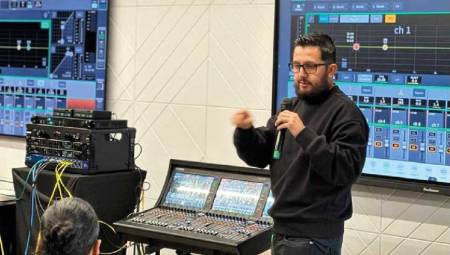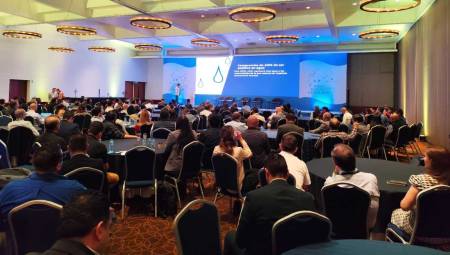 Latin America. Powersoft has released four new videos on its YouTube channel that further explore the capabilities of its Harmony 2.10 software platform. These recent videos cover Harmony's Interactive Tuning plugin, which features new built-in support for Rational Acoustics' Smaart software measurement platform.
Latin America. Powersoft has released four new videos on its YouTube channel that further explore the capabilities of its Harmony 2.10 software platform. These recent videos cover Harmony's Interactive Tuning plugin, which features new built-in support for Rational Acoustics' Smaart software measurement platform.
By taking information from Smaart and bringing it directly to Harmony, Powersoft users can optimize the operation of their amplifiers using Phase Adjustment and Harmony Equalization tools.
"While our mastery of Class D amplification, Power Factor Correction and other innovations make Powersoft's hardware superior, it is our Harmony software that helps ensure peak performance of our hardware in a montage," said Gino Pellicano, U.S. & Canada Application Engineer at Powersoft. "With Harmony 2.10, we've integrated our Interactive Tuning plugin with Smaart's incredible measurement capabilities to make system tuning easier and more effective than ever before. With these videos on YouTube, we are ensuring that our users can catch up with the latest Harmony capabilities and optimize their workflow."
The first video takes users through Smaart data programming to Harmony, allowing them to save and call Smaart data tracks without interruptions. Taking detailed measurements from the reference microphones, these tracks will help inform tuning decisions made within Harmony to maximize fidelity and performance.
The following video demonstrates how users can employ Smaart's noise generator from within Harmony to create spectrum data tracks using one or more reference microphones, as well as how to capture transfer function data tracks including magnitude and phase. To improve the readability and use of the tracks, the video shows how Harmony allows users to modify the color and names of the tracks and even trim individual tracks to show only relevant information and reduce the least useful.
The third video shows users how to overlay the tracks measured in Smaart over any section of EQ within Harmony for a given Powersoft amplifier channel. Using harmony's inversion function over the measurement curve, the video demonstrates how a compensatory EQ curve can be easily drawn to combine. After pressing the EQ interaction button, these filters are applied to the stored transfer function track, allowing the user to quickly optimize the response of the system, even when offline.
By applying this technique on the two high and low frequency output channels and then introducing crossover points, Armonía can generate a new curve based on the results of the combined curves, allowing users to analyze the phase response between the low and high frequency drivers both on and off axis.
In the final video, an all-pass filter is used to better align the phase of the two drivers. The video also shows an example of real-world sound in which measurements taken at three microphone positions within a space allow strategic manipulation of the subwoofer channel delay to solve alignment problems definitively.
To watch the videos, visit the Powersoft Channel on YouTube by clicking here.
http://powersoft-audio.us12.list-manage.com/track/click?u=3bd94ee95f29056db580d322f&id=7a648048a5&e=fc50865b49















